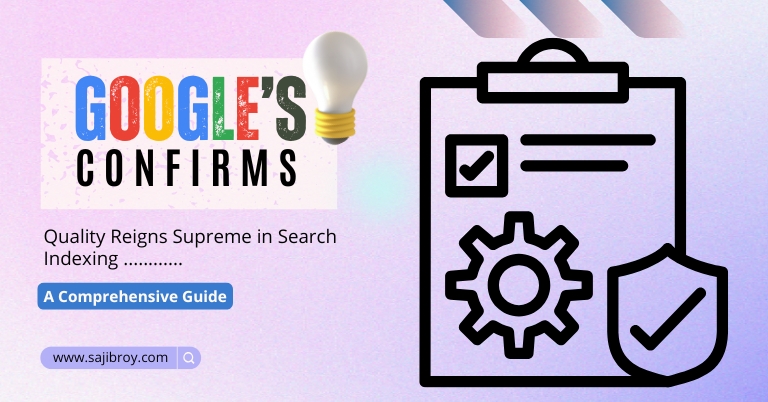To create a strong marketing plan that meets consumer needs, focus on understanding your target audience and tailoring your strategies to address their specific desires and pain points effectively. By conducting thorough market research and utilizing customer data, you can develop a comprehensive plan that speaks directly to your consumers, resonates with them, and drives desired actions.
A robust marketing plan is crucial for any business seeking success in today’s competitive market. It serves as a roadmap, guiding companies on how to effectively reach and engage their target audience. However, creating a strong marketing plan goes beyond promoting products or services loosely.
It requires a deep understanding of consumer needs and desires. By truly comprehending what motivates and drives your audience, you can tailor marketing efforts in a way that not only captures attention but also resonates with consumers on a personal level. We will explore effective strategies and techniques to develop a marketing plan that speaks directly to consumer needs, creating a meaningful connection and driving business growth.

Let's See the Topic Overview
What Is A Marketing Plan And Why Is It Important?
A marketing plan is a crucial tool that outlines strategies and tactics to effectively reach and engage target consumers. By understanding consumer needs, businesses can create a strong marketing plan that resonates with their audience, leading to increased brand awareness and sales.
Brief Explanation Of What A Marketing Plan Entails:
- A marketing plan is a comprehensive document that outlines the goals, strategies, and tactics a business will use to promote its products or services and reach its target audience.
- It involves analyzing market trends, identifying consumer needs and preferences, and developing a clear roadmap to achieve marketing objectives.
- A well-crafted marketing plan typically includes sections on market research, target audience analysis, positioning, competitive analysis, marketing objectives, strategies, tactics, budgeting, and evaluation.
Importance Of Having A Well-crafted Marketing Plan:
- A marketing plan serves as a roadmap for businesses to effectively reach their target audience and achieve their marketing goals. Without a well-defined plan, marketing efforts can be scattered and less effective.
- By conducting thorough market research and analyzing consumer needs, a marketing plan ensures that businesses have a deep understanding of their target audience and can tailor their messaging and strategies accordingly.
- A well-crafted marketing plan helps businesses stay focused and organized by setting clear objectives and timelines for marketing activities. This ensures that the marketing team stays on track and works towards common goals.
- Having a marketing plan allows businesses to allocate their resources more effectively. By determining the budget and resources needed for different marketing activities, businesses can make informed decisions and optimize their marketing efforts.
- A marketing plan also enables businesses to stay ahead of the competition by identifying their unique selling propositions and positioning themselves effectively in the market.
- Furthermore, a marketing plan serves as a tool for regular evaluation and measurement of marketing efforts. By tracking performance against objectives and making necessary adjustments, businesses can continuously improve their marketing strategies.
- Ultimately, a well-crafted marketing plan is essential for businesses to communicate their value proposition effectively, connect with their target audience, and achieve sustainable growth.
Identifying Target Audience And Consumer Needs
Creating a strong marketing plan involves identifying your target audience and understanding their needs. By conducting thorough research, you can develop content and strategies that speak directly to your consumers, increasing the effectiveness and success of your marketing efforts.
Understanding The Target Audience And Their Demographics:
- To create a strong marketing plan that effectively speaks to consumer needs, it is crucial to first understand the target audience and their demographics. This understanding allows businesses to tailor their marketing efforts specifically to the preferences, behaviors, and characteristics of their audience.
- Start by identifying the basic demographics of your target audience, such as age, gender, location, and socioeconomic status. These factors help in forming a comprehensive picture of who your consumers are.
- Consider conducting surveys, interviews, or using data analytics tools to gather insights into your audience’s interests, hobbies, attitudes, and lifestyles. This deeper understanding allows you to craft marketing messages that resonate and engage with your target consumers.
- Analyzing the demographics of your audience also helps you choose the most suitable marketing channels and platforms to reach them effectively. For example, if your target audience consists predominantly of young adults, utilizing social media platforms like Instagram and TikTok may yield better results compared to traditional advertising methods.
Conducting Market Research To Identify Consumer Needs:
- Market research plays a pivotal role in creating a strong marketing plan that addresses consumer needs. By conducting thorough research, businesses gain valuable insights into what their customers want, which allows them to develop products, services, and marketing campaigns accordingly.
- Start by defining the objectives of your market research, such as understanding consumer preferences, identifying market trends, or evaluating the competition. This provides a clear direction for your research efforts.
- Utilize various research methods and techniques, such as surveys, focus groups, or online analytics tools, to collect data and opinions from your target audience. This data helps in identifying their needs, pain points, and desires.
- Additionally, analyzing competitor marketing strategies and consumer feedback can offer valuable insights into what works and what doesn’t in your industry. This knowledge allows you to position your products or services effectively and differentiate yourself from the competition.
- Remember that market research should be an ongoing process, as consumer needs and preferences may evolve over time. Regularly update your research and adapt your marketing plan accordingly to stay relevant and meet consumer expectations.
Analyzing Consumer Behavior And Preferences:
- Understanding consumer behavior and preferences is essential in creating a marketing plan that effectively speaks to your target audience. This knowledge helps you tailor your messaging, branding, and product offerings to align with consumer needs and desires.
- Analyze data from various sources, such as website analytics, social media insights, or customer surveys, to gain insights into consumer behavior. This data provides valuable information on consumer interactions with your brand, their purchasing patterns, and their preferences.
- Identify common trends and patterns in consumer behavior to identify opportunities for marketing and product development. For example, if you notice a significant portion of your audience prefers eco-friendly products, consider incorporating sustainability in your marketing messaging and product features.
- Pay attention to consumer feedback and reviews, as they often reflect consumer preferences and satisfaction levels. This feedback can help you identify areas for improvement and refine your marketing strategies.
- Keep track of consumer trends, industry developments, and changes in technology to ensure your marketing plan remains up-to-date and relevant. By staying ahead of the curve, you can better anticipate consumer needs and provide innovative solutions.
Remember, crafting a strong marketing plan that speaks to consumer needs requires a deep understanding of your target audience, conducting thorough market research, and analyzing consumer behavior and preferences. By incorporating these steps into your marketing strategy, you can effectively connect with your consumers and drive impactful results.
Setting Clear Marketing Objectives And Goals
Create a strong marketing plan by setting clear objectives and goals that address consumer needs.
Defining Smart Marketing Objectives
- Specific: Clearly define what you want to achieve with your marketing efforts. Ask yourself specific questions like: What is the purpose of the marketing plan? What are the key areas you want to focus on?
- Measurable: Establish metrics and benchmarks to track the progress and success of your marketing activities. This could include metrics like website traffic, social media engagement, or conversion rates.
- Achievable: Set realistic marketing objectives that are within your reach. Consider your available resources, budget, and capabilities.
- Relevant: Ensure that your marketing objectives align with your overall business goals and target audience. They should contribute to the growth and success of your business.
- Time-bound: Set a clear timeline for achieving your marketing objectives. This helps create a sense of urgency and ensures that your efforts stay on track.
Aligning Objectives With Consumer Needs
- Understand your target audience: Conduct market research to gain insights into your customers’ preferences, behaviors, and pain points. This will help you align your marketing objectives with their needs and desires.
- Identify consumer needs: Analyze your target audience’s challenges and aspirations. Identify how your products or services can solve their problems or fulfill their desires.
- Segment your audience: Divide your target audience into different segments based on demographics, psychographics, or buying behaviors. This allows you to tailor your marketing objectives to each segment’s specific needs.
Setting Measurable And Realistic Goals
- Use key performance indicators (KPIs): Define specific KPIs that will help you measure the success of your marketing goals. These could be indicators like website traffic, lead generation, or revenue growth.
- Break down larger goals into smaller milestones: Setting smaller, achievable goals can help keep you motivated and make your progress more manageable.
- Consider industry benchmarks: Research industry benchmarks to set realistic goals for your marketing efforts. This can help you gauge the average performance within your industry and set appropriate targets.
- Regularly track and evaluate progress: Continuously monitor your progress toward your marketing goals. This will allow you to make necessary adjustments and ensure that your efforts are effective.
Remember, setting clear marketing objectives and goals is crucial for developing a strong marketing plan that aligns with consumer needs. By following the SMART framework and constantly tracking your progress, you can ensure that your marketing efforts are targeted, measurable, and ultimately successful in meeting consumer needs.
Crafting An Effective Value Proposition
Crafting an effective value proposition involves creating a strong marketing plan that accurately addresses consumer needs. By understanding the target audience’s pain points and offering unique solutions, businesses can create a compelling message that resonates with potential customers, driving successful marketing campaigns.
Your marketing plan is only as strong as the value proposition you provide to your consumers. A value proposition is a statement that explains the unique value your products or services offer and how they meet the needs of your target audience.
In this section, we’ll explore the key components of crafting an effective value proposition, including developing a unique selling proposition (USP) and tailoring it to consumer needs. By following these steps, you’ll be able to highlight the benefits and value of your offerings, ensuring that your marketing efforts resonate with your audience.
Developing A Unique Selling Proposition (USP):
A unique selling proposition (USP) is what sets your brand apart from competitors and communicates why consumers should choose your products or services. To develop a strong USP, consider the following:
- Identify your target audience: Understand who your ideal customers are and what they prioritize when making purchasing decisions.
- Analyze your competition: Research your competitors and determine how you can differentiate your offerings from theirs.
- Identify your unique strengths: Determine what makes your products or services unique, whether it’s superior quality, innovative features, or exceptional customer service.
- Solve a problem or fulfill a need: Highlight how your offerings address a pain point or fulfill a specific need for your target audience.
How To Tailor The Value Proposition To Consumer Needs:
After developing your USP, it’s essential to refine your value proposition further by tailoring it to the specific needs of your target audience. Here’s how:
- Research consumer needs: Gain insights into what your target audience values, their pain points, and the solutions they seek. Conduct surveys, and interviews, or analyze existing data to understand their preferences and motivations.
- Address specific pain points: Craft your value proposition to explicitly address the pain points or challenges your target audience faces. Clearly communicate how your offerings solve their problems or improve their lives.
- Highlight benefits over features: Instead of simply listing the features of your products or services, focus on the benefits they provide. Explain how your offerings add value, save time, enhance convenience, or improve overall well-being.
- Use clear and compelling language: Your value proposition should be concise, memorable, and easy to understand. Use language that resonates with your audience and conveys the unique value you provide.
By developing a strong USP and tailoring your value proposition to consumer needs, you can create a marketing plan that speaks directly to your target audience. This approach will help you highlight the benefits and value of your products or services, ultimately setting you apart from competitors and capturing the attention and loyalty of your consumers.
Conducting Competitor Analysis
Creating a strong marketing plan that speaks to consumer needs involves conducting competitor analysis. By analyzing your competitors’ strategies, you can identify gaps and opportunities in the market, enabling you to tailor your marketing efforts to better meet the needs of your target audience.
Researching And Analyzing Competitors In The Market
Conducting thorough research and analysis on your competitors is a crucial step in creating a strong marketing plan that speaks to consumer needs. By understanding what your competitors are doing, you can gain valuable insights and create strategies that set your business apart.
Here’s how to conduct competitor analysis effectively:
- Explore competitor websites: Visit the websites of your competitors to gain an understanding of their offerings, unique selling propositions, and target audiences.
- Analyze social media presence: Examine your competitors’ profiles on social media platforms to understand how they engage with their audience, the type of content they share, and the level of interaction they generate.
- Study their content marketing strategies: Look at the kind of content your competitors are producing, such as blog posts, videos, or podcasts. Analyze the topics they cover, their writing style, and the engagement they receive from their audience.
- Monitor their SEO efforts: Take note of your competitors’ keywords, meta tags, and search rankings. This information can inform your own SEO strategy and help you identify areas of opportunity.
- Investigate their advertising campaigns: Observe the advertising channels your competitors are utilizing, such as Google Ads or social media ads. Analyze their messaging, targeting, and overall effectiveness.
Identifying Their Strengths, Weaknesses, And Strategies
Once you have gathered information on your competitors, it’s essential to identify their strengths, weaknesses, and strategies. This analysis will help you understand what sets them apart and how you can differentiate your marketing plan. Consider the following points:
- Strengths: Determine what your competitors excel at. This could be their product quality, customer service, or brand reputation. Understanding their strengths will help you identify areas where you need to match or surpass their performance.
- Weaknesses: Pinpoint the areas where your competitors are lacking. It could be poor customer reviews, outdated technology, or a limited product range. Identifying their weaknesses allows you to capitalize on opportunities they may be missing.
- Strategies: Evaluate the marketing strategies your competitors are implementing. This includes their pricing strategy, promotional activities, and distribution channels. By understanding their approach, you can differentiate your marketing plan and tailor your messaging to attract your target audience effectively.
Differentiating Your Marketing Plan From Competitors
To create a marketing plan that stands out from the competition, you need to differentiate yourself effectively. Consider the following strategies:
- Unique value proposition: Identify what makes your product or service unique and focus on promoting those differentiating factors. Highlight the benefits that your competitors don’t offer and position yourself as the superior choice.
- Target audience: Develop a thorough understanding of your target audience and tailor your messaging to meet their specific needs and preferences. By aligning your marketing efforts with the desires of your audience, you can effectively differentiate yourself from competitors.
- Brand identity: Develop a strong brand identity and communicate it consistently across all marketing channels. A unique brand personality can help consumers connect with your business on a deeper level, setting you apart from competitors.
- Innovative approaches: Continuously seek new and innovative ways to present your products or services. This could involve leveraging emerging technologies, exploring unconventional marketing channels, or creating unique customer experiences.
By conducting competitor analysis, identifying their strengths and weaknesses, and implementing effective differentiation strategies, you can create a marketing plan that resonates with your target audience and sets you apart from the competition.
Creating A Strategic Marketing Mix
Create a strategic marketing mix that effectively addresses consumer needs. Craft a strong marketing plan that resonates with your target audience and drives results.
To create a strong marketing plan that resonates with consumer needs, it is essential to develop a comprehensive marketing mix. This involves strategically aligning each element of the marketing mix (Product, Price, Place, Promotion) with the target audience’s preferences and desires.
By utilizing various marketing channels and tactics, businesses can effectively communicate their value proposition and engage with potential customers. Let’s explore each aspect of the marketing mix in detail:
Developing A Comprehensive Marketing Mix (Product, Price, Place, Promotion)
- Product: The product is the core offering of a business and should be designed to meet the specific needs and preferences of the target audience. It is crucial to analyze consumer insights, conduct market research, and identify any gaps or opportunities in the market. By continuously monitoring and improving the product, businesses can ensure that it remains relevant and attractive to the target market.
- Price: Pricing strategy plays a crucial role in influencing consumer behavior. It is important to consider the perceived value of the product in relation to its competitors, as well as the target audience’s willingness to pay. Businesses should conduct thorough market research to determine the optimal pricing strategy that satisfies both the consumer’s expectations and the company’s profitability objectives.
- Place: The place element refers to the distribution channels used to make the product available to the target audience. It is essential to select the most appropriate channels based on the preferences and buying behavior of the consumers. Whether it is through online platforms, brick-and-mortar stores, or a combination of both, businesses must ensure that their products are conveniently accessible to their target audience.
- Promotion: Promotion involves the various marketing tactics employed to raise awareness, influence consumer perceptions, and persuade potential customers to make a purchase. This includes advertising, public relations, sales promotions, and other promotional activities. By understanding the target audience’s interests, preferences, and media consumption habits, businesses can tailor their promotional efforts to effectively reach and engage with the intended consumers.
Aligning Each Element With Consumer Needs
- Conduct thorough market research to understand the target audience’s demographics, preferences, and purchasing behavior.
- Identify the unique value proposition of the product and communicate it effectively to the target audience.
- Customize the product features, pricing, and distribution channels to meet the specific needs and expectations of the consumers.
- Continuously gather feedback and analyze customer insights to ensure that the marketing mix elements remain aligned with consumer needs.
Utilizing Various Marketing Channels And Tactics
- Leverage digital marketing channels such as social media, search engine optimization, content marketing, and email marketing to reach and engage with a wide range of consumers.
- Utilize traditional marketing channels such as print media, radio, television, and direct mail when appropriate to target specific consumer segments.
- Implement targeted advertising strategies to reach the intended audience effectively.
- Use a mix of online and offline marketing tactics to create an integrated and cohesive marketing campaign.
By creating a strategic marketing mix that aligns with consumer needs and utilizing a variety of marketing channels and tactics, businesses can effectively communicate their value proposition and attract and retain their target audience. Remember, the key to success lies in understanding the target customers’ preferences, continuously adapting to changing market dynamics and delivering a superior consumer experience.
Implementing And Monitoring The Marketing Plan
Creating a robust marketing plan that effectively addresses consumer needs involves implementing and closely monitoring key strategies. This entails conducting market research, identifying target audiences, setting clear objectives, selecting appropriate marketing channels, and regularly evaluating the plan’s performance to ensure its success.
Creating an action plan for execution:
- Identify the specific actions and tactics required to deliver on the marketing objectives.
- Develop a timeline with clear deadlines for each activity.
- Assign responsibilities to team members and ensure accountability.
- Break down the plan into manageable tasks to facilitate smooth execution.
- Regularly communicate progress and address any obstacles or challenges.
Establishing key performance indicators (KPIs) for tracking progress:
- Determine the metrics that align with your marketing goals and objectives.
- Set specific, measurable, achievable, relevant, and time-bound KPIs.
- Examples of KPIs include website traffic, conversion rates, customer engagement, and return on investment (ROI).
- Implement analytics tools to track and collect data on the defined KPIs.
- Regularly review and analyze the KPIs to assess the effectiveness of the marketing plan.
Regularly evaluating and adjusting the marketing plan based on consumer feedback and market changes:
- Collect and analyze customer feedback through surveys, reviews, and social listening.
- Monitor market trends, competitors, and industry developments.
- Identify gaps or opportunities in the current marketing strategy.
- Review KPIs and compare performance against benchmarks and goals.
- Adjust the marketing plan accordingly, making necessary changes to tactics and targeting based on insights gained.
By implementing and monitoring the marketing plan effectively, businesses can stay agile, assess performance, and adapt to meet consumer needs and market changes. It ensures that marketing efforts are aligned with business objectives, driving success and growth.
Measuring Success And ROI
A strong marketing plan that speaks to consumer needs is crucial for measuring success and ROI. By understanding what drives consumer behavior, businesses can create targeted strategies that effectively engage their target audience, leading to greater returns on investment.
Metrics And Tools For Measuring Marketing Success
Measuring the success of your marketing efforts is essential to determine the effectiveness of your strategies and make informed decisions for future campaigns. With the plethora of data available, using the right metrics and tools is crucial to gain valuable insights.
Here are some key metrics and tools to consider:
- Website Analytics: Tracking website traffic, bounce rates, and conversions provide insights into user behavior and the overall performance of your campaigns.
- Social Media Analytics: Monitoring engagement metrics such as likes, shares, and comments helps measure the success of your social media marketing efforts.
- Email Marketing Analytics: Examining open rates, click-through rates, and conversions from email campaigns enables you to measure their impact on your target audience.
- Conversion Rate: Tracking the percentage of visitors who complete desired actions, such as making a purchase or filling out a form, measures the effectiveness of your marketing in driving conversions.
- Customer Lifetime Value (CLTV): CLTV estimates the total revenue a customer generates throughout their relationship with your brand, helping you measure the profitability of your marketing efforts.
- Cost per Acquisition (CPA): Calculating the cost required to acquire a customer provides insights into the efficiency of your marketing strategies.
- Brand Awareness: Measuring metrics such as social media mentions, search volume, and website traffic helps gauge the reach and awareness of your brand.
- Customer Satisfaction: Utilizing customer feedback, surveys, and Net Promoter Score (NPS) helps assess the overall satisfaction of your customers.
These tools provide valuable data and insights into the success of your marketing efforts, enabling you to make data-driven decisions.
Calculating Return On Investment (ROI) From Marketing Efforts
Determining the return on investment (ROI) from your marketing activities is vital to assessing the profitability of your strategies. By calculating ROI, you can measure the effectiveness of your campaigns and make necessary adjustments. Here’s how to calculate ROI:
- ROI Formula: The basic ROI formula is (Net Profit / Cost of Investment) x 100. Net profit is the revenue generated from a campaign, minus the costs incurred. The ROI value indicates the percentage return or loss on your marketing investment.
- Attributing Revenue to Marketing Efforts: Tracking revenue directly generated from specific marketing activities helps attribute accurate values to your campaigns and calculate ROI more accurately.
- Including All Costs: To obtain an accurate ROI, include all costs associated with your marketing efforts, including advertising expenses, labor costs, and technology tools utilized.
- Comparing ROI Across Campaigns: Comparing ROI across different campaigns allows you to identify successful strategies and invest more in those that generate higher returns.
- Considering Long-Term ROI: Long-term ROI analysis helps measure the sustained impact of your marketing efforts and build a solid foundation for future strategies.
By regularly calculating ROI and analyzing its trends, you can make informed decisions about allocating resources and optimizing your marketing efforts.
Utilizing Data To Optimize Future Marketing Strategies
Data analysis plays a crucial role in fine-tuning and optimizing your marketing strategies. By leveraging the data generated from various tools and metrics, you can gain actionable insights to guide future marketing decisions. Here’s how to utilize data effectively:
- Data Segmentation: Segmenting your data based on demographics, behavior, and preferences enables you to personalize your marketing efforts and tailor messaging to specific audience segments.
- A/B Testing: Testing different variations of marketing campaigns helps identify the most effective elements and optimize future strategies based on data-driven results.
- Identifying Trends: Analyzing data trends over time helps uncover patterns, identify changing consumer preferences, and adjust your strategies accordingly.
- Behavioral Analytics: Understanding user behavior on your website or app through heatmaps, session recordings, and click-through rates enables you to optimize user experience and conversion rates.
- Customer Feedback Analysis: Analyzing customer feedback, reviews, and surveys helps uncover pain points, improve customer satisfaction, and enhance your marketing strategies.
- Competitor Analysis: Evaluating data on your competitors’ marketing strategies, social media presence, and content performance helps identify areas for improvement and stay ahead of the competition.
- Predictive Analytics: Utilizing predictive modeling and algorithms helps anticipate customer behavior, identify market trends, and optimize marketing strategies proactively.
By leveraging the power of data, you can continuously refine and optimize your marketing strategies, resulting in more effective campaigns that resonate with your target audience.
Continuous Review And Improvement
To create a strong marketing plan that speaks directly to consumer needs, continual review and improvement are essential. This ensures that strategies are constantly refined and adapted to meet evolving customer expectations, resulting in effective and targeted marketing efforts.
A strong marketing plan is a dynamic process that involves continuous review and improvement. By regularly evaluating and refining your strategies, you can stay ahead of consumer needs and effectively communicate with your target audience. Here are three key aspects to consider and integrate into your marketing plan:
The Importance Of Continuous Evaluation And Improvement
- Regularly assess the effectiveness of your marketing efforts to identify areas of improvement and potential opportunities.
- Keep track of key performance indicators (KPIs) such as website traffic, conversions, and sales to gauge the success of your strategies.
- Utilize analytics tools to gain insights into consumer behavior and preferences, allowing you to make data-driven decisions.
- Seek feedback from customers, both through surveys and social media interactions, to gain valuable insights into their perceptions and needs.
- Conduct A/B testing to compare different approaches and optimize your marketing campaigns based on real-time results.
Incorporating Consumer Feedback Into Future Marketing Plans
- Take the time to listen and understand your customers’ needs, preferences, and pain points.
- Analyze customer feedback and use it to refine your marketing messages, content, and overall brand strategy.
- Engage with customers on social media, respond to reviews, and encourage open dialogue to build strong relationships and trust.
- Use customer testimonials and success stories to showcase the value of your products or services.
- Personalize your marketing communications based on customer segmentation to deliver tailored messages and improve engagement.
Staying Updated With Industry Trends And Adapting To Changes
- Keep a pulse on industry trends, advancements, and changes that may impact your target market.
- Follow thought leaders, and industry publications, and attend conferences to stay informed about emerging technologies and best practices.
- Embrace innovative marketing tactics such as influencer partnerships, user-generated content campaigns, or immersive virtual experiences.
- Monitor your competition to identify areas where you can differentiate and deliver unique value to your customers.
- Be agile and adapt your marketing strategies accordingly to leverage new opportunities and navigate market shifts.
Remember, a strong marketing plan is not a static document but a living framework that requires continuous evaluation, adaptation, and improvement. By incorporating consumer feedback and staying updated with industry trends, you can ensure that your marketing strategies effectively speak to consumer needs and drive results.
Frequently Asked Questions
How Do You Create A Strong Marketing Plan?
To create a strong marketing plan, follow these guidelines: keep sentences brief (20 words max), write in an active voice, be unique, and make it SEO-friendly yet human-like. Avoid certain phrases and never use passive voice. Aim for a human-like tone while ensuring your content passes AI detection.
What Is A Strong Marketing Plan?
A strong marketing plan is a strategic blueprint that guides businesses in promoting their products or services effectively. It helps achieve specific goals and targets by implementing a range of marketing activities such as market research, audience segmentation, advertising, social media campaigns, and content creation.
A well-developed plan includes a clear understanding of the target audience, competitor analysis, a unique selling proposition, and a comprehensive action plan with measurable results. It ensures efficient resource allocation and maximizes return on investment (ROI) for marketing efforts.
What Are The 7 Steps To Creating An Effective Marketing Plan?
The 7 steps to creating an effective marketing plan: research, set goals, identify the target audience, develop strategies, implement tactics, measure results, and adjust accordingly.
What Are The 3 Key Elements of a Successful Marketing Plan?
The 3 key elements of a successful marketing plan are target audience analysis, clear goals, and effective strategies.
Conclusion
Creating a strong marketing plan that effectively speaks to consumer needs is a crucial aspect of any successful business. By thoroughly researching your target market, analyzing their preferences and behaviors, and understanding their pain points, you can tailor your marketing efforts to resonate with them on a deeper level.
A comprehensive marketing plan not only outlines your objectives and strategies but also takes into account the evolving landscape of the industry. By constantly adapting and staying updated with the latest trends and consumer insights, you can ensure that your marketing plan remains relevant and impactful.
Don’t forget the power of utilizing data and analytics to measure the effectiveness of your marketing campaigns and make data-driven decisions. By implementing these strategies, you can create a strong marketing plan that effectively speaks to consumer needs and positions your business for long-term success.
Remember, understanding and addressing consumer needs should always be at the forefront of your marketing efforts.



![6-Month Local SEO Plan [Download Your Complete Proposal Template]](https://www.sajibroy.com/wp-content/uploads/2025/01/6-Month-Local-SEO-Plan-Download-Your-Complete-Proposal-Template.jpg)








